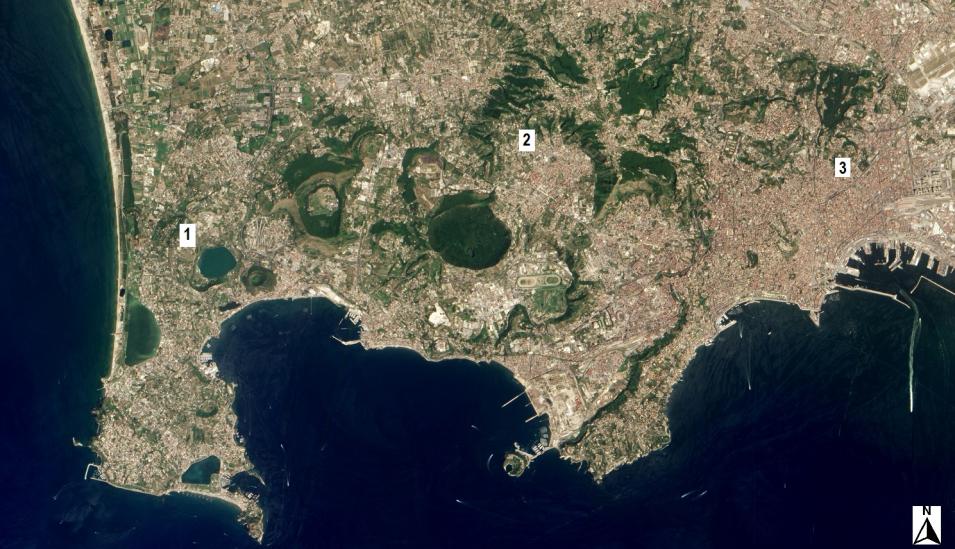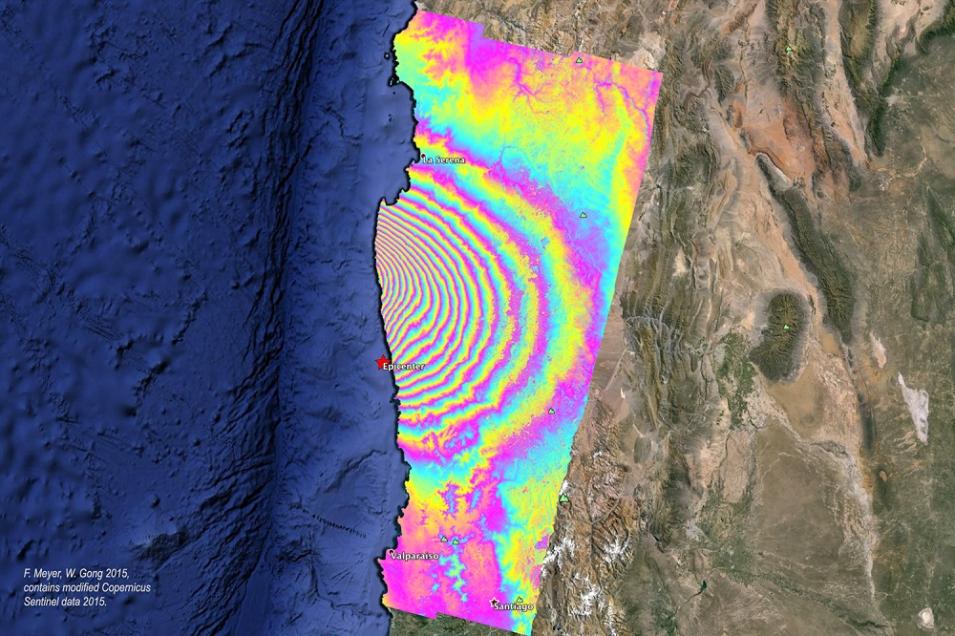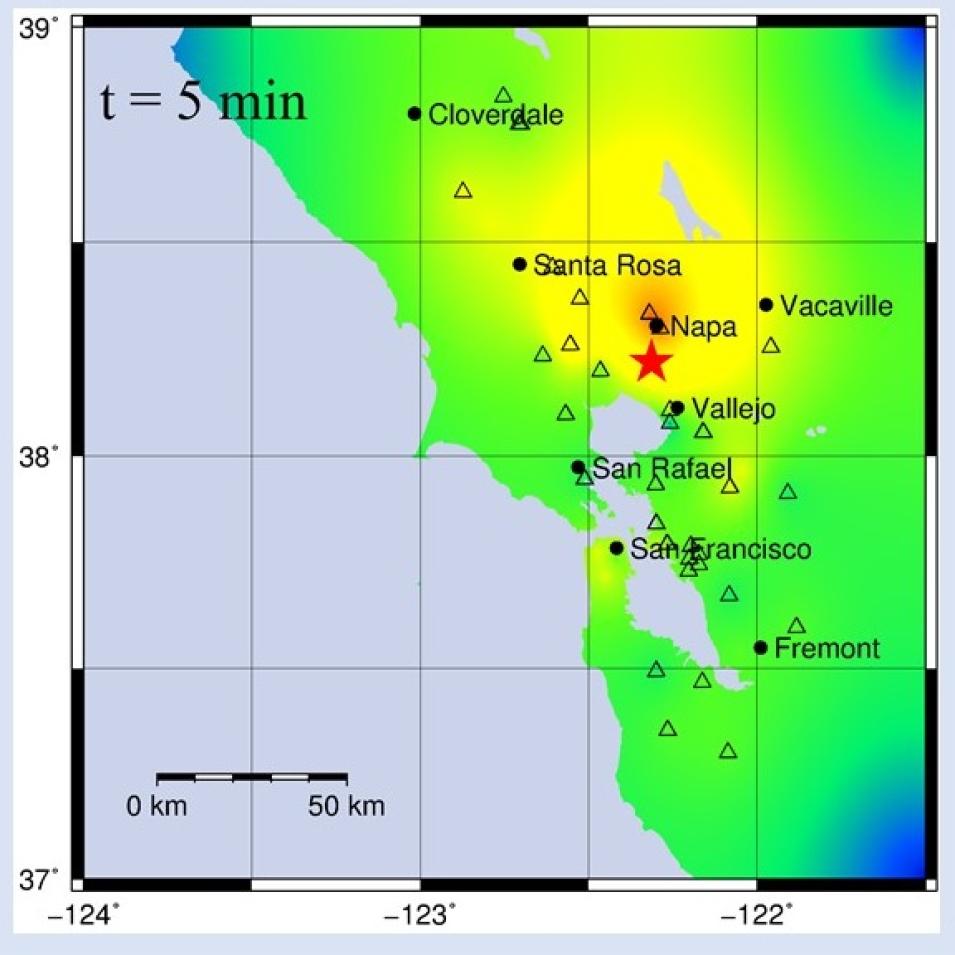In a study published in 2017 investigating earthquake intensity, Tiampo and her colleagues made use of a more common data source—Twitter feeds. Since earthquake intensity is one of the key components in the decision-making process for disaster response and emergency services, the research team used advanced Big Data analytics to process Twitter social media feeds along with data from physical sensors (seismographs) to jointly estimate the ground shaking in near real-time from a magnitude 6.0 earthquake that occurred August 24, 2014, in South Napa, CA. The team showed that in the minutes after the event, the joint analysis of social media and data from physical sensors provided better estimates of the location and magnitude of ground shaking than using data from either source alone.
Along with naturally-occurring earthquakes, research by Tiampo shows that human-induced earthquakes also are possible, especially in areas with heavy oil and gas exploration. Anthropogenic earthquakes caused by wastewater injection and the process of fracking have become more common in central North America. In fracking, high-pressure liquid is injected into subterranean rocks, boreholes, and similar features to force open existing fissures to extract oil or gas. One consequence of wastewater injection and fracking is the triggering of seismic activity in areas that have not historically experienced earthquakes and that are relatively unprepared for the associated ground shaking. Tiampo and her colleagues identified the first earthquakes in North America that were induced through the process of fracking. The research team followed these results by using InSAR for detailed studies of ground deformation associated with a series of human-induced earthquakes in Oklahoma, noting “the potential for InSAR to facilitate rapid response efforts for shallow, moderate-sized earthquakes, especially in poorly seismically-instrumented areas.”
Meanwhile, rumbles continue under the Campi Flegrei, where the last known eruption occurred in 1538 and Naples had a population of about 200,000. Today, Naples is one of the most populated metropolitan areas in Italy, with classic Italian red-roofed buildings nestled along the verdant cliffs of the caldera. Far below, magma courses through ancient vents. With the aid of Earth observing data, Dr. Kristy Tiampo is helping a growing global population monitor and be better prepared for the potential hazards of living in urban environments—including the three million neighbors of Vulcan’s home.
Representative data products used:
- SAR data and imagery distributed by NASA’s ASF DAAC:
- ESA Sentinel-1A/B; NASA’s provision of the complete ESA Sentinel-1 SAR data archive through the ASF DAAC is by agreement between the U.S. State Department and the European Commission
- Japan Aerospace Exploration Agency (JAXA) ALOS PALSAR; all PALSAR data and imagery © JAXA/METI
- ESA European Remote Sensing satellites (ERS-1 and ERS-2); NASA’s provision the ERS-1 and ERS-2 SAR data archive via the ASF DAAC is by agreement between NASA and ESA
- NASA Uninhabited Aerial Vehicle Synthetic Aperture Radar (UAVSAR)
- GNSS data; available through NASA’s CDDIS
- SRTM terrain data; available through NASA’s Land Processes DAAC (LP DAAC)
- NASA/JAXA Tropical Rainfall Measuring Mission (TRMM) and Global Precipitation Measurement (GPM) Core Observatory precipitation data related to landslide triggering and flooding; available through NASA’s Goddard Earth Sciences Data and Information Services Center (GES DISC)
Read about the research:
Barba-Sevilla, M., Baird, B.W., Liel, A.B. & Tiampo, K.F. (2018). Hazard Implications of the 2016 Mw 5.0 Cushing, OK Earthquake from a Joint Analysis of Damage and InSAR Data. Remote Sensing, 10(11), 1715. doi:10.3390/rs10111715
Kropivnitskaya, Y., Tiampo, K.F., Qin, J.H. & Bauer, M.A. (2017). Real-Time Earthquake Intensity Estimation Using Streaming Data Analysis of Social and Physical Sensors. Pure and Applied Geophysics, 174(6): 2331-2349. doi:10.1007/s00024-016-1417-6
Tiampo, K.F., Gonzalez, P.J., Samsonov, S., Fernandez, J. & Camacho, A. (2017). Principal component analysis of MSBAS DInSAR time series from Campi Flegrei, Italy. Journal of Volcanology and Geothermal Research, 344(15): 139-153. doi:10.1016/j.jvolgeores.2017.03.004
Explore more Data User Profiles.


